1. Introduction
Violence takes many forms. Historically, the impact and type of violence have differed depending on gender, with violence against women presenting the most alarming statistics [
1,
2]. According to the United Nations Entity for Gender Equality and the Empowerment of Women (ONU Women), one in three women worldwide has experienced violence in her lifetime, with intimate partner violence being the predominant form. Despite efforts to reduce this type of violence worldwide, in 2022, more than five women or girls were killed by a family member every hour [
3].
Violence against women is even more severe [
4,
5] in countries with internal armed conflict such as Colombia. In the Pacific region of Nariño, the township of San Andrés de Tumaco is one of the most affected areas by this phenomenon, where violence persists and impacts the health and well-being of all its inhabitants. According to [
6], this district has 27.52% unsatisfied basic needs, 53.7% multidimensional poverty, and a high rate of victimization. This bulletin also reports that 52% of the victims in San Andrés de Tumaco are women, the highest figure in the country.
Another study [
7] presents research on the gender gap that reveals that after age 40, a significant percentage of women face limitations in their daily performance due to time constraints that affect rest and the realization of physical and mental self-care activities, concluding that these impacts are acquired and preventable [
8].
Gender-based violence significantly affects women and is a public health and safety problem [
8]. According to the National Demographic and Health Survey (NDHS), between 2010 and 2015, there was an increase in the percentage of women aged 15–49 years who did not seek help in cases of violence, possibly reflecting a lack of access to support resources or the reluctance to seek help [
9]. The report “Cifras Violeta VI” of the Gender Observatory of Nariño presents data on sexual, family, and intimate partner violence between 2015 and 2019. It shows an annual increase in each aspect [
10], pointing to the problem of violence that has been experienced in this territory for several years.
Violence against women in San Andrés de Tumaco, Nariño, is complex and requires precise characterization to implement effective intervention strategies [
11]. The social determinants of health based on gender violence are fundamental to recognizing the actors involved and the various forms of violence faced by women beyond commonly reported physical violence, including the identification of psychological sequelae and violence [
12,
13].
Establishing patterns in the official national health reports is a pivotal tool for characterizing the needs and the violence faced by women in this district. In this sense, classification techniques and the identification of characteristics through machine learning (ML) are relevant, given their versatility. Throughout the world, the study of these algorithms for identifying and analyzing patterns of gender violence has gained momentum, as shown below.
This article is organized as follows:
Section 2 details a review of the works related to our proposal;
Section 3 presents the methodology used for pattern detection;
Section 4 shows the results of analyzing health reports with ML algorithms;
Section 5 presents a discussion of the results; and finally conclusions are offered.
4. Results
This section details the results after applying the different ML methods. To design the event analysis model, statistical analysis was performed to understand the data behavior, the relationships between them, and their connection with the phenomenon of violence.
The first exploratory analysis complemented this study by initially cleaning and labeling the data on suicide attempts, intoxications, and gender and intrafamily violence. A few isolated cases with the predominance of violence were identified, standing out for their severe consequences on the health and life of the victims. This hindered the recognition of the profiles of potential victims, as it highlighted the general context and covered the patterns of cases with less alertness. Pointing out these cases facilitated a more contextual approach, considering the experience and type of violence suffered, not only the consequences of the event. Thus, partial discrimination of the predominant cases was made to define the most common cases and understand the phenomenon and the situation of the victim and their environment.
Similarly, based on the exploration and recognition of the databases, the categories of variables of the SIVIGILA 356, 365, and 875 events were compiled in the dictionary of variables in
Appendix A. This identified the characteristics of the information consolidated in this system based on the study of notification forms used by the officials of health entities to report cases [
32,
33,
34]. The dictionary recognizes the variables corresponding to the basic and complementary data in the reports of the events. It is worth noting that for the variables whose description was filled in as “unknown”, no specific definition was found in the SIVIGILA sources reviewed.
The confusion matrix shows that the decision tree has limited accuracy in predicting referrals to social workers of the women who attempted suicide. Of the 92 cases evaluated, 26 were correctly predicted as non-referred and 12 as referred. However, the model failed in 54 cases; 20 women were incorrectly predicted as referred (false positives), and 34 as non-referred (false negatives), indicating difficulties in correctly identifying the cases that needed a referral to social workers. Of the databases provided by the mayor’s office of San Andrés de Tumaco, those with a significant number of unreported or empty records were identified, which influenced the exploratory process of selecting the variables that contribute most to the profiles of the victims.
The data in
Table 1 were used for statistical and exploratory analyses. The variables of events 356 and 365 were related to the detection of patterns in the algorithms, given the context from the researchers; however, when victimization patterns on the potential victim profiles were identified, the definitive variables were the area where the event occurred, life cycle, the type of health service of the abused woman or girl, and whether the report indicated possible partner problems. Likewise, the nature of the violent event and whether the woman or girl lived with the aggressor were analyzed, as well as whether she was alerted or was referred to a mental health or social work service.
In this regard, the variables related to socioeconomic level and population groups were identified. However, despite being a crucial sociodemographic factor for characterizing populations, this study did not report conclusive data on the phenomenon due to the lack of information and adequate documentation during case registration.
Figure 1 illustrates how the categories of the variables analyzed throughout this research helped define the profiles of victims in events 356, 365, and 875.
Figure 1a demonstrates the impact of unreported cases on the variables related to population groups and socioeconomic strata.
Figure 1b,
Figure 2 and
Figure 3 show the contribution of definitive variables to the victim profiles of each studied event.
Similarly, MCA was conducted on the identified variables, and clustering was applied to the common group characteristics among the women affected in each event. The MCA of the event data revealed that factors such as life cycle, the area of occurrence, and the health status of the victim are shared elements in cases of gender-based violence. These factors allowed for the recognition of violence occurrence patterns in urban and dispersed rural areas. In addition, it was observed that suicide attempts are related to the life cycles of women in youth and adulthood, whereas gender and domestic violence are principally associated with childhood, especially in cases of neglect and abandonment, suggesting a possible relationship between the violence experienced by mothers and neglect in the care of their daughters.
The cluster classification shown in
Figure 4 reveals the connection between the cases and the degrees of vulnerability and normalization of violence. In particular, in the case of minors, violence is not normalized; thus, this is reflected in a higher reporting rate in contrast to what is observed in adult women.
Furthermore, it was found that victims who live with their aggressors suffer principally from physical and psychological violence, neglect, and abandonment, aspects that belong to the life cycles of women in early childhood, youth, and adulthood. In contrast, victims who do not live with their aggressor were predominantly found in the life cycles of childhood and adolescence and suffered from sexual violence.
4.1. Implementation of Decision Trees
Based on the selection of variables that most contributed to characterizing the victim profile and the application of decision tree algorithms, the following results were obtained. As shown in the decision tree in
Figure 5, the classification of women referred to social work services was obtained from training with variables such as alcohol_abuse, area, partner_prob, economic_prob, education, ss_type, and life_cycle, and aimed to predict referral to social work for women who had attempted suicide by analyzing several characteristics.
Alcohol abuse was reported by 57.10% of the women, and 61.04% were from urban or sparsely populated rural areas. When there were no relationship problems, 68.46% of the cases were referred to social workers, whereas 50% were referred to social workers when relationship problems existed. The women with lower levels of education had a referral rate of 71.11% compared to 42.86% of those with higher levels of education. Additionally, 15.87% of cases did not report alcohol abuse, and among these, 84.13% were not referred to social workers. These data underline the idea that factors such as alcohol abuse, the area of residence, partner issues, and educational level influence referrals to social workers.
The confusion matrix shown in
Figure 6 demonstrates the ability of decision trees to predict referral to social workers for women who had attempted suicide. The values reveal that of the 92 cases evaluated, the model correctly predicted 26 as non-referred and 12 as referred, with 20 false positives and 34 false negatives.
The classification metrics shown in
Table 2 indicate that the model’s accuracy is 58.69%, its recall is 56.66%, its precision is 73.91%, and its F1 score is 64.15%, suggesting that, although its accuracy is reasonable, its ability to adequately identify all the cases needing referral (sensitivity) is limited.
The classification results of the women referred to psychiatric services obtained through the decision tree trained with the variables life_cycle, area, marital_status, ethnicity, education, health_insurance_type, suicidal_ideation, and partner_prob, as shown in
Figure 7, aim to predict the referral to psychiatry services of the women who had attempted suicide using several descriptive variables. The data indicate that 68.42% of urban women and 82.61% of single or divorced women are referred to psychiatry services compared to 53.33% of those in cohabiting relationships. Regarding ethnicity, 64% of women from Indigenous communities and 41.46% of Afro-Colombian women are referred. Furthermore, 39.13% of women with basic education are referred. In the contributory health system, 60% are referred, while 39.06% are referred under the subsidized regime. When suicidal ideation is present, there is a referral rate of 53.33%, a figure that decreases to 34.69% when such ideations are absent. Adolescent women present a referral rate of 52.38%, whereas the result for women in other stages of life is 21.43%.
Women who were referred to psychiatry for suicide attempts. The higher the density of the group. That is, if there is greater probability, the darker the color and in the blue ones belong to that if it is more likely to be referred to psychiatry services, the darker then the branch of the tree, the more likely it is to be referred to psychiatry services, and the lighter the less likely, the darker the more likely it is almost certainly to be referred to psychiatric services for attempted suicide.
The confusion matrix shown in
Figure 8 and the decision tree classification metrics shown in
Table 3 predicting referrals to psychiatry services show an accuracy of 65.21%, with a sensitivity of 62.96% and a precision of 73.91%, resulting in an F1 score of 68%. The matrix revealed that ten cases of referral (true positives) and six cases of non-referral (true negatives) were properly predicted, although there were also 17 false negatives and 13 false positives. These results indicate the moderate ability of the model to predict psychiatric referrals, with a good balance between precision and sensitivity, despite the significant number of false negatives presented.
For the analysis of event 365, poisonings, the tree shown in
Figure 9 was elaborated upon, capturing the characteristics of the poisonings of women in “alert situations”. The root node indicates 81.51% of the cases classified as “no”, and 18.49% as “yes”. The variable ‘life cycle’ divides the sample into early childhood, childhood, adolescence, youth, adulthood, etc. The majority of accidental poisonings are classified as “yes”. The type of health regime indicates that most cases occur under a subsidized or uninsured regime, where there is a higher proportion of cases classified as “yes”. In contrast, the branch with infancy, adolescence, youth, adulthood, and old age shows that most cases are classified as “no”. In summary, most acute poisonings that occur in early childhood are accidental, and factors such as the type of exposure and health regime influence them.
The confusion matrix shown in
Figure 10 and the decision tree model metrics given in
Table 4 show that the accuracy is 79.66%, indicating a good performance in predicting alert situations. However, the sensitivity (46.15%) reveals difficulties when correctly identifying all the alert situations; an accuracy of 54.54% points to a high false alarm rate. An F1 score of 50% reflects a moderate balance between the ability to detect alert situations and avoid false alarms, suggesting possible improvements in the model’s sensitivity and accuracy.
For the analysis of event 875, gender violence, the tree shown in
Figure 11 was elaborated upon with characteristics that classify the nature of situations of physical, psychological and sexual violence, neglect, and abandonment using variables such as life cycle, ethnicity, the type of social service, and the occurrence area. Its configuration was based on categories such as life_cycle, per_ethn_, type_ss_, area, and nature, determining that the majority of physical mistreatment occurs in Afro-Colombian black or mixed race youths and adults, and sexual abuse is more frequent in adolescents and older people of the same group. Indigenous people and other groups in dispersed rural areas have a higher incidence of neglect and abandonment, and Indigenous people in infancy and early childhood suffer more psychological mistreatment.
The confusion matrix of the decision tree model shown in
Figure 12 and the classification metrics given in
Table 5 reflect its strong performance in predicting cases of neglect and abandonment, with an accuracy of 83.33% and a sensitivity of 83.33%. However, its ability to correctly predict physical, psychological, and sexual violence is limited, especially in the case of sexual violence, with a sensitivity of 25% and an accuracy of 33.33%.
Even though the model is relatively effective for some categories, it needs considerable improvement to identify all the types of violence.
4.2. Implementation of Random Forests
A random forest model was trained using the data on event 356 to improve the accuracy in identifying relevant characteristics for the referral of women to social workers. By recognizing the importance of each variable in the event, it was found that the most significant were education level, socioeconomic status, the area of occurrence, life cycle, the type of health service, the place of intoxication, alcohol abuse, ethnic affiliation, marital status, relationship problems, economic issues, gestational week, and suicidal thoughts.
Given the problem of unreported data in the variable stratum, this was excluded from training. The use of the other typologies was scaled in a new algorithm, focusing the analysis of characteristics of the individuals. Cross-validation was performed (
Figure 13), and the best behavior of the random forests was identified only with the variables that did not generate bias or confusion: schooling, area, life cycle, the type of social security, alcohol abuse, ethnicity, marital status, relationship problems, economic problems, and suicidal thoughts.
In
Figure 14 and
Table 6, the random forest model trained with the principal variables shows a moderate performance, with metrics of around 60%. It has an accuracy of 61.08%, a precision of 61.05%, a recall of 62.36%, and an F1 score of 61.70%, indicating a moderate ability for effective identification and referral to social workers. The selection of these variables has improved the model’s accuracy and reflects the adequate identification of relevant features.
Also, to characterize the profiles of the women who had attempted suicide referred to psychiatry services, a random forest model was trained with complementary data variables, identifying the most important: schooling, stratum, area, life cycle, the type of social security, place of attempt, alcohol abuse, ethnicity, marital status, marital problems, the week of gestation, and suicidal ideation. Additional tests with these variables showed that life cycle, area, schooling, the type of social security, suicidal ideation, ethnicity, marital status, and marital problems were the most relevant and did not generate bias. Cross-validation with different numbers of trees in the model confirmed these results, as shown in
Figure 15.
For predicting psychiatric referral, the random forest model obtained an accuracy of 58.69%, a precision of 59.09%, a recall of 56.52%, and an F1 score of 57.77% (
Table 7).
The confusion matrix shown in
Figure 16 shows 9 true negative cases, 14 false positives, 13 false negatives, and 10 true positives, indicating a moderate algorithm performance.
With the implementation of the random forest model to improve the decision-making capacity in alert cases and review the additional variables of event 365 (see
Table A2,
Appendix A), the observations were balanced for improved prediction. It was observed that the life cycle significantly influences poisoning cases, and marital status emerges as a possible principal factor, indicating the relevance of the support network in situations of violence that can be life-threatening.
Figure 17 includes a confusion matrix of the random forest model’s ability to predict alert situations in poisoning. In this case, it provides one true positive (TP), one true negative (TN), ten false positives (FPs), and ten false negatives (FNs).
Despite these values, the performance metrics (
Table 8) are high; accuracy is 90.90; precision is 90.90; recall is 90.90, and the F1 score is also 90.90, suggesting that the model exhibits high overall accuracy and efficiency even when the confusion matrix indicates that the model faces difficulties in correctly distinguishing between the “yes” and “no” classes in specific situations. These metrics could be due to an unbalanced dataset or the model benefiting from invisible factors in the confusion matrix.
This may be related to us observing more frequent alerts reported as early childhood accidents. Exposure that intentionally seeks to harm life was also identified. However, insufficient observations or characteristic variables do not generate an effective context-sensitive value classifier.
To improve the decision-making capacity for the types of violence, the cross-validation of different random forest models was performed with event 875 (
Figure 18). The relationship between the aggressor and the victim and the socioeconomic aspect influenced the type of violence.
After training the best random forest model, the most influential variables were identified: r_fam_vic, cycle_life, sex_agre, per_ethn_, r_nofiliar, pac_hos_, conv_agre, ambito_lug, area_, tip_ss_, and estrato_. However, not all of these variables are unique to the victim. Therefore, a model was trained with other variables, cycle_life, per_ethn_, area_, conv_agre, and tip_ss_,(see
Table A1) to improve the characterization of potential victims.
The confusion matrix shown in
Figure 19 and the classification metrics given in
Table 9 indicate that the random forest model trained with cycle_life, per_ethn_, area_, conv_agre, and tip_ss_(see
Table A2 has a sound predictive capacity to classify violence. The accuracy, sensitivity, precision, and F1 score metrics indicate an acceptable performance, standing out in predicting physical and psychological violence. However, the model presents accuracy and sensitivity problems for the categories neglect and abandonment and sexual violence, suggesting improvements in future model iterations.
4.3. Artificial Neural Network (ANN)
The neural network designed to characterize psychiatric referrals in the cases of attempted suicide included four hidden layers with five hundred, one hundred, six, and two neurons, and a convergence threshold of 0.0, with a maximum step size of 1 × 1014 Training was repeated three times using the “rprop+” algorithm and the logistic activation function. Although the network showed better metrics after several adjustments to its hyperparameters, it did not achieve a high predictive capacity. This model took five times longer to train due to the small number of observations and the need to balance the data.
The confusion matrix shown in
Figure 20 for the trained neural network revealed a poor performance in predicting referrals to social workers in the reports of suicide attempts, as
Table 10 shows. The high mean prediction error rate, 62.86%, and entropy problems indicate that the model is ineffective in correctly distinguishing between the cases that are and are not referred to social workers.
For the women who attempted suicide and were referred to psychiatric services, there is a four-layer, hidden neural network with the same configuration as the social work referral network. Although this model demonstrated improved metrics, it did not achieve predictive capacity, and the same entropy and prediction error problems as those of the previous network were generated, becoming noticeable in the confusion matrix shown in
Figure 21 and the metrics given in
Table 11. Also, the training time was five times longer due to the need to balance the collected data.
The confusion matrix shown in
Figure 21 for the neural network trained to predict referral to psychiatry services showed a poor performance, with an accuracy of 51.43%. The neural network achieved 43 true negatives and 25 true positives, but also had 51 false positives and 21 false negatives. With an precision of 32.81%, a recall of 45.65%, and an F1 score of 38.18%, it is clear that the model suffers from a poor predictive capacity. In addition, the mean entropy was not calculable, and the mean prediction error was 48.57%, indicating that the characterization of the referral phenomenon to areas such as psychiatry or social work services presents a high level of complexity.
For the analysis of gender and domestic violence with ANNs, the predictive capacity of the model was evaluated without analyzing the variables involved in decision making. The neural network with a hidden layer structure (500, 100, 10, or 4) and specific parameters was used to optimize the predictive performance.
The confusion matrix shown in
Figure 22 reveals that the neural network model contained a high mean prediction error (1.970297) and an undefined mean entropy (NaN), indicating a poor performance. Considering the information in
Table 12, classification yielded improved results in the cases of physical and sexual violence, with precision of 75.69% and 74.55% and sensitivity of 80.63% and 69.61%, respectively. However, its performance was scarce concerning psychological violence, as its precision stands at only 3.77%, its sensitivity is 12.50%, and it did not identify the cases of neglect and abandonment, reflecting a lack of correct predictions for this category.
Finally, the projection design based on the rates of gender and domestic violence provided by the statistical analysis of the SIVIGILA 875 event is presented concerning the results of implementing clustering and random forest algorithms.
Table 13 shows the violence rates in the 875 event reports.
Based on the population reports from the National Administrative Department of Statistics (DANE) from 2024 to 2028, hypothetical profiles of potential victims were created through detailed statistical analysis of the dataset needed to predict violence in San Andrés de Tumaco. A distribution was established based on the observation rates of event 875, applying the mean to obtain a portrait of the trend of violence cases. The observation rate calculated with the number of women per 1000 inhabitants resulted in wider representativeness of the dataset and a richer interpretation of the frequencies in a sample of 1000 women as the analysis unit (
Table 13).
These victim profiles were used to make specific predictions, applying clustering techniques according to initial exploratory analysis.
The results showed that the random forest and clustering algorithms were effective in the projections. Combining these methods made it possible to accurately classify the different types of violence and identify relevant patterns in the data. The projections obtained with these models provided a comprehensive and detailed view of gender violence in San Andrés de Tumaco, facilitating the identification of critical areas for future interventions.
The projections and the visualization of all the database figures analyzed throughout this research were recorded in the decision-making tool shown in
Figure 23 and
Figure 24.
5. Discussion
The analysis of the SIVIGILA system has revealed significant deficiencies in the completion of reports, affecting the quality and accuracy of the collected data. The lack of automation in data entry by health institution personnel contributes to common errors, such as information duplication in incorrect fields and outdated records in reporting forms. Additionally, although the district government of San Andrés de Tumaco expressed interest in detailing the results by neighborhoods and ethnic groups, it was found that the location data in the databases did not adhere to the uniform standards. This inconsistency hindered the filtering and exploration of information, preventing precise and detailed local and sectoral analyses, although some vulnerabilities were characterized by the zone of occurrence.
In this regard, studies such as [
35,
36] also highlight the importance and urgent need for well-curated datasets that significantly improve the accuracy and reliability of models, especially in critical areas like health, thus preventing biased and inefficient models. These observations emphasize the immediate need to train the personnel responsible for completing event notification forms to mitigate the entry of erroneous data and improve the quality of information reported in the SIVIGILA.
Although the application of artificial neural networks did not identify representative patterns in the collected data, these tests provided valuable insights into the limitations and needs of the datasets. On the other hand, the random forest algorithm proved more effective when combined with under sampling techniques, showing a significant improvement in the accuracy and robustness of the results. Additionally, the use of clustering techniques revealed patterns in the normalization of gender-based violence, particularly highlighting the vulnerability of individuals involved in the reported cases.
These findings align with previous research. For example, Khan et al. [
37] proposed using neural networks to predict patterns of domestic violence based on socioeconomic data, where key variables, such as education level, income, and family history, play a crucial role. This approach significantly contributes to the results presented here, providing a methodology that facilitates the identification and prevention of future cases of violence through the analysis of historical patterns.
Similarly, García et al. [
38] explored the relationship between the use of classification techniques, such as decision trees and support vector machines, to analyze the impact of social determinants on youth violence. This study highlights the potential to predict violent behavior, which directly correlates with the focus on gender-based violence analyzed here.
These approaches are essential for understanding the effectiveness of models, as highlighted in the literature, particularly in the study by Pérez et al. [
39], who emphasize the importance of confusion matrices in the evaluation of classification models. The results obtained in this research are consistent with those of Pérez et al. regarding the utility of these metrics for interpreting performance, although clustering techniques were also incorporated, providing a more detailed view of the patterns in the data.
Moreover, the analysis of variable importance was performed using techniques like Principal Component Analysis (PCA), which helped identify the most influential factors in predictions. This approach aligns with the findings of Gómez et al. [
40], who emphasize the use of PCA to identify the risk factors associated with gender-based violence. In this research, PCA also enhanced the interpretation of the results complemented by clustering, which facilitated the segmentation and more effective analysis of the data.
Finally, the predictive capacity of the model reached a margin close to 70%, highlighting the effectiveness of the methodology applied. This result aligns with the literature, as observed in the work of Zhang et al. [
41], which emphasizes the importance of cross-validation techniques to improve the robustness of predictive models. However, this research stands out for its specific focus on gender-based violence, showing a significant advancement in the application of ML models in this context.
Analysis reveals several critical areas that require intervention to address gender-based violence in San Andrés de Tumaco. These findings suggest the need to implement specific strategies to improve the situation and support the affected women.
First, educational interventions are essential. The proposal includes developing programs from early childhood that promote gender equality, mutual respect, and peaceful conflict resolution. These programs should be integrated into the school curriculum and complemented with workshops and community campaigns. Teacher training and community awareness are essential to create a meaningful and lasting cultural change.
Regarding access to mental health services, it is crucial to improve the availability and accessibility of therapy and psychological support for women victims of gender-based violence. Health centers and community organizations should offer these services, ensuring cultural sensitivity and accessibility. Proper care will allow for women to recover emotionally and healthily and rebuild their lives.
Financial support is also vital. Programs that include job training, access to microcredit, employment programs, and financial assistance should be recommended to help women achieve economic independence. This support can reduce their dependence on abusers and facilitate their ability to escape violent situations.
Strengthening community support networks is another crucial aspect. Clear protocols should be established to respond to gender-based violence, training community leaders, and creating safe spaces for victims. The active participation of the community in the prevention and response to violence contributes to creating a supportive and protective environment for the affected women.
Additionally, raising awareness and preventing alcohol abuse is essential to address one of the main risk factors for gender-based violence. Educational campaigns, regulations on alcohol sales, and treatment programs for people with abuse problems are proposed. Addressing excessive alcohol consumption can reduce the risk of violence and promote a safer environment.
Finally, promoting legal rights and resources is crucial. Women need information about their legal rights and the resources available for their protection. Legal rights training, the creation of legal counseling centers, and the promotion of these services, either free or low-cost, will ensure that women can access justice and protect themselves from violence.
These proposals are designed to address gender-based violence from multiple angles to create a comprehensive and sustainable approach that benefits the women of San Andrés de Tumaco.
Author Contributions
Conceptualization, O.L.G.G., C.F.T.-T., T.M.P.-Y. and Z.R.C.-V.; methodology, E.R.B.-M., E.D.C.-M., S.E.C.-B. and R.R.R.-R.; software, J.B.; validation, E.R.B.-M. and E.D.C.-M.; formal analysis, E.R.B.-M. and R.R.R.-R.; investigation, S.E.C.-B. and E.R.B.-M.; resources, R.R.R.-R.; data curation, E.R.B.-M., J.B. and E.D.C.-M.; writing—original draft preparation, E.R.B.-M., E.D.C.-M. and J.B.; writing—review and editing, S.E.C.-B., O.L.G.G., C.F.T.-T., T.M.P.-Y. and Z.R.C.-V.; visualization, J.B.; supervision, R.R.R.-R.; project administration, E.R.B.-M. and S.E.C.-B.; funding acquisition, S.E.C.-B. All authors have read and agreed to the published version of the manuscript.
Funding
This research was funded by Minciencias—Ministry of Science, Technology and Innovation of Colombia, National Fund for Financing Science, Technology and Innovation Francisco José de Caldas through contract no. 112721-276-2023—Orchids program.
Institutional Review Board Statement
Not applicable.
Informed Consent Statement
Not applicable.
Data Availability Statement
The data presented in this study are not publicly available due to confidentiality reasons and the need to protect the personal data of the participating population. These data are under the domain of the Mayor’s Office of San Andrés de Tumaco, which provided them for the research under strict confidentiality agreements. Access to the data is restricted to ensure compliance with ethical and legal principles regarding personal data protection. However, interested parties may request the data from the corresponding author, subject to approval from the relevant authorities and adherence to the established confidentiality agreements.
Conflicts of Interest
The authors declare no conflict of interest
References
- Sardinha, L.; Maheu-Giroux, M.; Stöckl, H.; Meyer, S.R.; García-Moreno, C. Global, regional, and national prevalence estimates of physical or sexual, or both, intimate partner violence against women in 2018. Lancet 2022, 399, 803–813. [Google Scholar] [CrossRef] [PubMed]
- Thurston, A.M.; Stöckl, H.; Ranganathan, M. Natural hazards, disasters and violence against women and girls: A global mixed-methods systematic review. BMJ Glob. Health 2021, 6, e004377. [Google Scholar] [CrossRef]
- Hechos y Cifras: Poner fin a la Violencia Contra las Mujeres|ONU Mujeres. Available online: https://www.unwomen.org/es/what-we-do/ending-violence-against-women/facts-and-figures#83918 (accessed on 4 July 2024).
- Zamora-Moncayo, E.; Burgess, R.A.; Fonseca, L.; González-Gort, M.; Kakuma, R. Gender, mental health and resilience in armed conflict: Listening to life stories of internally displaced women in Colombia. BMJ Glob. Health 2021, 6, e005770. [Google Scholar] [CrossRef] [PubMed]
- Svallfors, S. Hidden Casualties: The Links between Armed Conflict and Intimate Partner Violence in Colombia. Politics Gend. 2023, 19, 133–165. [Google Scholar] [CrossRef]
- Boletín 8—Datos para la paz—Corte Octubre 2023. 2023. Available online: https://datospaz.unidadvictimas.gov.co/archivos/datosPaz/boletin_datos_paz_octubre_fronteras.pdf (accessed on 25 December 2023).
- Observatorio de Género de Nariño, Secretaría de Equidad de Género e Inclusión Social de Nariño y ONU Mujeres. Mujeres y Hombres: Brechas de Género en Nariño. Available online: https://colombia.unwomen.org/es/biblioteca/publicaciones/2020/12/mujeres-y-hombres-brechas-de-genero-en-narino (accessed on 1 February 2024).
- García Restrepo, E.; Cardona, D.; Tirado Otálvaro, A.F. La violencia contra las mujeres en Colombia, un desafío para la salud pública en cuanto a su prevención, atención y eliminación. CES Derecho 2021, 12, 167–175. [Google Scholar] [CrossRef]
- Ministerio de Salud y Protección Social. Resumen Ejecutivo Encuesta Nacion de Demografía y Salud. Available online: https://www.minsalud.gov.co/sites/rid/Lists/BibliotecaDigital/RIDE/DE/ENDS-libro-resumen-ejecutivo-2016.pdf (accessed on 1 February 2024).
- Observatorio de Género de Nariño. Informe Cifras Violeta, Edición VI—Violencia Contra las Mujeres en Nariño 2015–2019—Observatorio de Género de Nariño. 2021. Available online: https://observatoriogenero.udenar.edu.co/cifras_violeta_vi/ (accessed on 11 July 2024).
- Sanín, J.R. Violence against Women in Politics: Latin America in an Era of Backlash. J. Women Cult. Soc. 2020, 45, 302–310. [Google Scholar] [CrossRef]
- Giammarioli, A.M.; Longo, E.; Bucciardini, R. Gender-Based Violence is a Never to be Forgotten Social Determinant of Health: A Narrative Literature Review. In Women’s Health Problems—A Global Perspective; IntechOpen: London, UK, 2023. [Google Scholar] [CrossRef]
- Dawson, M.; Carrigan, M. Identifying femicide locally and globally: Understanding the utility and accessibility of sex/gender-related motives and indicators. Curr. Sociol. 2020, 69, 682–704. [Google Scholar] [CrossRef]
- Castorena, C.M.; Abundez, I.M.; Alejo, R.; Granda-Gutiérrez, E.E.; Rendón, E.; Villegas, O. Deep Neural Network for Gender-Based Violence Detection on Twitter Messages. Mathematics 2021, 9, 807. [Google Scholar] [CrossRef]
- Rodríguez-Rodríguez, I.; Rodríguez, J.V.; Pardo-Quiles, D.J.; Heras-González, P.; Chatzigiannakis, I. Modeling and Forecasting Gender-Based Violence through Machine Learning Techniques. Appl. Sci. 2020, 10, 8244. [Google Scholar] [CrossRef]
- Karystianis, G.; Cabral, R.C.; Han, S.C.; Poon, J.; Butler, T. Utilizing Text Mining, Data Linkage and Deep Learning in Police and Health Records to Predict Future Offenses in Family and Domestic Violence. Front Digit Health 2021, 3, 602683. [Google Scholar] [CrossRef]
- Bauer, G.R.; Mahendran, M.; Walwyn, C.; Shokoohi, M. Latent variable and clustering methods in intersectionality research: Systematic review of methods applications. Soc. Psychiatry Psychiatr. Epidemiol. 2022, 57, 221–237. [Google Scholar] [CrossRef] [PubMed]
- Vicente, G.; Goicoa, T.; Ugarte, M.D. Bayesian inference in multivariate spatio-temporal areal models using INLA: Analysis of gender-based violence in small areas. Stoch. Environ. Res. Risk Assess. 2020, 34, 1421–1440. [Google Scholar] [CrossRef]
- Pinto-Muñoz, C.-C.; Zuñiga-Samboni, J.-A.; Ordoñez-Erazo, H.-A.; Pinto-Muñoz, C.-C.; Zuñiga-Samboni, J.-A.; Ordoñez-Erazo, H.-A. Machine Learning Applied to Gender Violence: A Systematic Mapping Study. Rev. Fac. Ing. 2023, 32, e15944. [Google Scholar] [CrossRef]
- Devries, K.M.; Mak, J.Y.; Bacchus, L.J.; Child, J.C.; Falder, G.; Petzold, M.; Astbury, J.; Watts, C.H. Intimate partner violence and incident depressive symptoms and suicide attempts: A systematic review of longitudinal studies. PLoS Med. 2013, 10, e1001439. [Google Scholar] [CrossRef] [PubMed]
- Lynn, E.; Doyle, A.; Keane, M.; Bennett, K.; Cousins, G. Drug Poisoning Deaths Among Women: A Scoping Review. J. Stud. Alcohol Drugs 2020, 81, 543–555. [Google Scholar] [CrossRef]
- Bandara, P.; Page, A.; Senarathna, L.; Kidger, J.; Feder, G.; Gunnell, D.; Rajapakse, T.; Knipe, D. Domestic violence and self-poisoning in Sri Lanka. Psychol. Med. 2022, 52, 1183–1191. [Google Scholar] [CrossRef] [PubMed]
- Urdinola, B.P. Modelo para la caracterización y clasificación de los tipos de violencia intrafamiliar desde los registros del sistema de salud. Ph.D. Thesis, University of California, Berkeley, CA, USA, 2004. [Google Scholar]
- Breiman, L. Random forests. Mach. Learn. 2001, 45, 5–32. [Google Scholar] [CrossRef]
- Oh, G.; Song, J.; Park, H.; Na, C. Evaluation of Random forest in Crime Prediction: Comparing Three-Layered Random forest and Logistic Regression. Deviant Behav. 2022, 43, 1036–1049. [Google Scholar] [CrossRef]
- Guerrero, A.; Cárdenas, J.G.; Romero, V.; Ayma, V.H. Comparison of Classifiers Models for Prediction of Intimate Partner Violence. Adv. Intell. Syst. Comput. 2021, 1289, 469–488. [Google Scholar] [CrossRef]
- Biró, T.S.; Néda, Z. Gintropy: Gini Index Based Generalization of Entropy. Entropy 2020, 22, 879. [Google Scholar] [CrossRef]
- Hossain, M.M.; Asadullah, M.; Rahaman, A.; Miah, M.S.; Hasan, M.Z.; Paul, T.; Hossain, M.A. Prediction on Domestic Violence in Bangladesh during the COVID-19 Outbreak Using Machine Learning Methods. Appl. Syst. Innov. 2021, 4, 77. [Google Scholar] [CrossRef]
- Krstinić, D.; Braović, M.; Šerić, L.; Božić-Štulić, D. Multi-Label Classifier Performance Evaluation with Confusion Matrix. Comput. Sci. Inf. Technol. 2020, 1, 1–14. [Google Scholar] [CrossRef]
- Theissler, A.; Thomas, M.; Burch, M.; Gerschner, F. ConfusionVis: Comparative evaluation and selection of multi-class classifiers based on confusion matrices. Knowl. Based Syst. 2022, 247, 108651. [Google Scholar] [CrossRef]
- Ileberi, E.; Sun, Y.; Wang, Z. Performance Evaluation of Machine Learning Methods for Credit Card Fraud Detection Using SMOTE and AdaBoost. IEEE Access 2021, 9, 165286–165294. [Google Scholar] [CrossRef]
- Cuello Villamil, A.; Camelo Ciro, A.; Castro Molinares, S. Caracterización del intento de suicidio en un municipio de Colombia durante tres años. Diversitas: Perspectivas en Psicología 2023, 19, 55–73. [Google Scholar] [CrossRef]
- Solarte, I.N.; Rodríguez, A.R.; Jiménez, D.D.; Díaz, I.D.P.; Martínez, E.; Hernández, B.P. Manual Para Análisis: Indicadores Para La Vigilancia De Eventos De Interés En Salid Publica. Available online: https://siteold.saludputumayo.gov.co/documentos/NORMAS/MANUAL_INDICADORES.pdf (accessed on 1 February 2024).
- Duran, M.E.M.; García, O.E.P.; Carey, A.O.; Bonilla, H.Q.; Ortiz, M.; Forero, L.J.; Armenta, A.; Bolívar, N.G. Violencia de Género. Available online: https://www.minsalud.gov.co/sites/rid/Lists/BibliotecaDigital/RIDE/IA/INS/protocolo-violencia-genero.pdf (accessed on 1 February 2024).
- Pérez, M. Evaluación de la efectividad del sistema de información para la vigilancia epidemiológica en salud pública. Rev. Investig. Cienc. Soc. Salud 2023, 7, 1970. [Google Scholar] [CrossRef]
- Gómez, A. Aplicación de técnicas de minería de datos en la salud pública: Un análisis de patrones de enfermedades infecciosas. Rev. Iberoam. Sist. Tecnol. Gestión 2022, 51, 84–98. [Google Scholar] [CrossRef]
- Khan, F.; Niazi, M.A.; Muneer, S. Predicting domestic violence using machine learning. J. Soc. Sci. Humanit. 2019, 28, 45–60. [Google Scholar]
- García, J.; López, M.; Pérez, A. Social determinants of youth violence: A predictive analysis using machine learning. J. Soc. Violence Stud. 2020, 14, 221–240. [Google Scholar]
- Valero-Carreras, D.; Alcaraz, J.; Landete, M. Comparing two SVM models through different metrics based on the confusion matrix. Comput. Oper. Res. 2023, 152, 106131. [Google Scholar] [CrossRef]
- Gómez, J. Análisis de componentes múltiples para la identificación de factores de riesgo en la violencia de género. Comput. Sist. 2023, 25, 123–135. [Google Scholar]
- Zhang, W.; Liu, Z.; Xue, Y.; Wang, R.; Cao, X.; Li, J. An Improved Cross-Validated Adversarial Validation Method. In Knowledge Science, Engineering and Management, Proceedings of the 16th International Conference, KSEM 2023, Guangzhou, China, 16–18 August 2023; Springer: Cham, Switzerland, 2023; pp. 343–353. [Google Scholar]
Figure 1.
Contribution of variable category to victim profiles of event 356. Suicide attempt in San Andrés de Tumaco. (a) Considering “not-reported” cases. (b) Discriminating non-reported cases. The red line corresponds to the significance threshold to underline the contribution of the variables to the aggregate.
Figure 2.
Contribution of definitive variable categories to the victim profile for event 365—intoxication in San Andrés de Tumaco. The red line corresponds to the significance threshold to underline the contribution of the variables to the aggregate.
Figure 3.
Contribution of definitive variable categories to victim profiles of event 875. Gender-based and domestic violence in San Andrés de Tumaco. The red line corresponds to the significance threshold to underline the contribution of the variables to the aggregate.
Figure 4.
Scatter plot of grouping provided by PAM clustering for event 875. Gender and domestic violence in San Andrés de Tumaco.
Figure 5.
Decision tree for predicting social work referrals of women who had attempted suicide.
Figure 6.
Confusion matrix of trained decision tree for predicting social work referrals of women who had attempted suicide.
Figure 7.
Decision tree for predicting referral of women who had attempted suicide to psychiatry services.
Figure 8.
Confusion matrix of trained decision tree for predicting psychiatric referral of women who had attempted suicide.
Figure 9.
Decision tree focusing on predicting women who have been referred for poisoning in alert situation.
Figure 10.
Confusion matrix of trained decision tree for predicting alert situations for poisonings.
Figure 11.
Decision tree focused on predicting nature/type of violence suffered by women in context of gender-based and intrafamily violence.
Figure 12.
Confusion matrix of decision tree trained to predict type of violence suffered by women.
Figure 13.
Cross-validation applied to random forests in prediction of referrals of women experiencing abuse to social work services.
Figure 14.
Confusion matrix random forest for predicting referrals to social workers of women who had attempted suicide.
Figure 15.
Cross-validation applied to random forests in predicting referrals of women who had been physically assaulted to psychiatric services.
Figure 16.
Random forest confusion matrix trained for predicting psychiatric referrals of women who had attempted suicide.
Figure 17.
Confusion matrix random forest trained to predict alertness in poisoning.
Figure 18.
Cross-validation applied to random forests in predicting nature/type of violence suffered by women in relation to gender and domestic violence.
Figure 19.
Confusion matrix. Random forest trained to predict nature/type of violence suffered by women in relation to gender and domestic violence.
Figure 20.
ANN confusion matrix trained for predicting social worker referral.
Figure 21.
ANN confusion matrix trained for predicting referral to psychiatric service.
Figure 22.
ANN confusion matrix trained to predict the nature/type of violence suffered by women in relation to gender and domestic violence.
Figure 23.
The interface of the section presenting the gender violence figures in San Andrés de Tumaco and the anonymous reporting button from the decision-making tool developed in Power BI. Source:
https://linktr.ee/OrquideasTumaco (accessed on 2 October 2024).
Figure 24.
The interface of the section that shows projections of the gender-based violence rate in San Andrés de Tumaco for 2024 and 2028 from the decision-making tool developed in Power BI. Source:
https://linktr.ee/OrquideasTumaco (accessed on 2 October 2024).
Table 1.
Variables used in exploratory statistical analysis. (For more information see
Appendix A).
| Event | Variables |
|---|
| 356 | area_, stratum_, life_cycle, per_ethnic_, gp_displacement, gp_dislocation, gp_disability, gp_psychia, ss_type, prev_intensive, hos_pac_, couple_problem, economic_problem, legal_problem, labor_problem, family_problem |
| 365 | area_, stratum_, life_cycle, ss_ type, pac_hos_, sit_ale, typ_exp, con_fin_, sit_ale, est_civ |
| 875 | area_, life_cycle, tip_ss_, nature, conv_agre |
Table 2.
Classification metrics for social work referral according to decision tree for women who had attempted suicide.
| Accuracy | Recall | Precision | F1 Score |
|---|
| 58.69% | 56.66% | 73.91% | 64.15% |
Table 3.
Classification metrics for psychiatric referral using decision tree in women who had attempted suicide.
| Accuracy | Sensitivity | Precision | F1 Score |
|---|
| 65.21% | 62.96% | 73.91% | 68% |
Table 4.
Classification metrics for psychiatric referral using decision tree in women who are poisoned.
| Accuracy | Sensitivity | Precision | F1 Score |
|---|
| 79.66% | 46.15% | 54.54% | 50% |
Table 5.
Metrics for classifying violence type using decision tree.
| Class | Accuracy | Sensitivity | Precision | F1 Score |
|---|
| Physical | 66.66% | 58.33% | 43.75% | 50% |
| Psychological | 68.05% | 41.66% | 71.42% | 52.63% |
| Neglect and abandonment | 83.33% | 83.33% | 62.50% | 71.42% |
| Sexual | 54.16% | 25% | 33.33% | 28.57% |
Table 6.
Classification metrics for referral to social workers in suicide attempt cases according to random forest.
| Accuracy | Precision | Recall | F1 Score |
|---|
| 61.08% | 61.05% | 62.36% | 61.70% |
Table 7.
Random forest classification metrics for psychiatry referral in suicide attempt cases.
| Accuracy | Precision | Recall | F1 Score |
|---|
| 58.69% | 59.09% | 56.52% | 57.77% |
Table 8.
Classification metrics for alert situation in random forest poisonings.
| Accuracy | Precision | Recall | F1 Score |
|---|
| 90.90% | 90.90% | 90.90% | 90.90% |
Table 9.
The metrics for classifying the type of violence using a decision tree.
| Class | Accuracy | Recall | Precision | F1 Score |
|---|
| Physical | 66.66% | 58.33% | 43.75% | 50% |
| Psychological | 68.05% | 41.66% | 71.42% | 52.63% |
| Neglect and abandonment | 83.33% | 83.33% | 62.50% | 71.42% |
| Sexual | 54.16% | 25% | 33.33% | 28.57% |
Table 10.
ANN classification metrics for social worker referral.
| Accuracy | Precision | Sensitivity | F1 Score |
|---|
| 37.14% | 35.93% | 32.85% | 34.32% |
Table 11.
ANN classification metrics for psychiatric referral.
| Accuracy | Precision | Recall | F1 Score |
|---|
| 51.43% | 32.81% | 45.65% | 38.18% |
Table 12.
Metrics for classifying violence type using ANN.
| Class | Accuracy | Sensitivity | Precision | F1 Score |
|---|
| Physical | 76.14% | 80.63% | 75.69% | 78.08% |
| Psychological | 53.39% | 12.50% | 3.77% | 5.79% |
| Neglect and abandonment | 49.29% | 0% | 0% | NaN% |
| Sexual | 76.94% | 69.61% | 74.55% | 72.00% |
Table 13.
Rates of gender-based violence in San Andrés de Tumaco from 2018 to 2023.
| Año | Total Female Population | Cases of Gender-Based and Domestic Violence Against Women | Women Who Experienced Gender-Based and Domestic Violence | Rate of Violence Cases Against Women per 1000 Women | Rate of Women Who Experienced Violence per 1000 Women |
|---|
| 2018 | 128 752 | 366 | 355 | 2.84 | 2.73 |
| 2019 | 129 923 | 401 | 374 | 3.08 | 2.87 |
| 2020 | 132 176 | 324 | 296 | 2.45 | 2.23 |
| 2021 | 133 515 | 392 | 363 | 2.93 | 2.71 |
| 2022 | 134 277 | 406 | 374 | 3.02 | 2.78 |
| 2023 | 135 117 | 515 | 467 | 3.81 | 3.45 |
| Disclaimer/Publisher’s Note: The statements, opinions and data contained in all publications are solely those of the individual author(s) and contributor(s) and not of MDPI and/or the editor(s). MDPI and/or the editor(s) disclaim responsibility for any injury to people or property resulting from any ideas, methods, instructions or products referred to in the content. |
© 2025 by the authors. Licensee MDPI, Basel, Switzerland. This article is an open access article distributed under the terms and conditions of the Creative Commons Attribution (CC BY) license (https://creativecommons.org/licenses/by/4.0/).
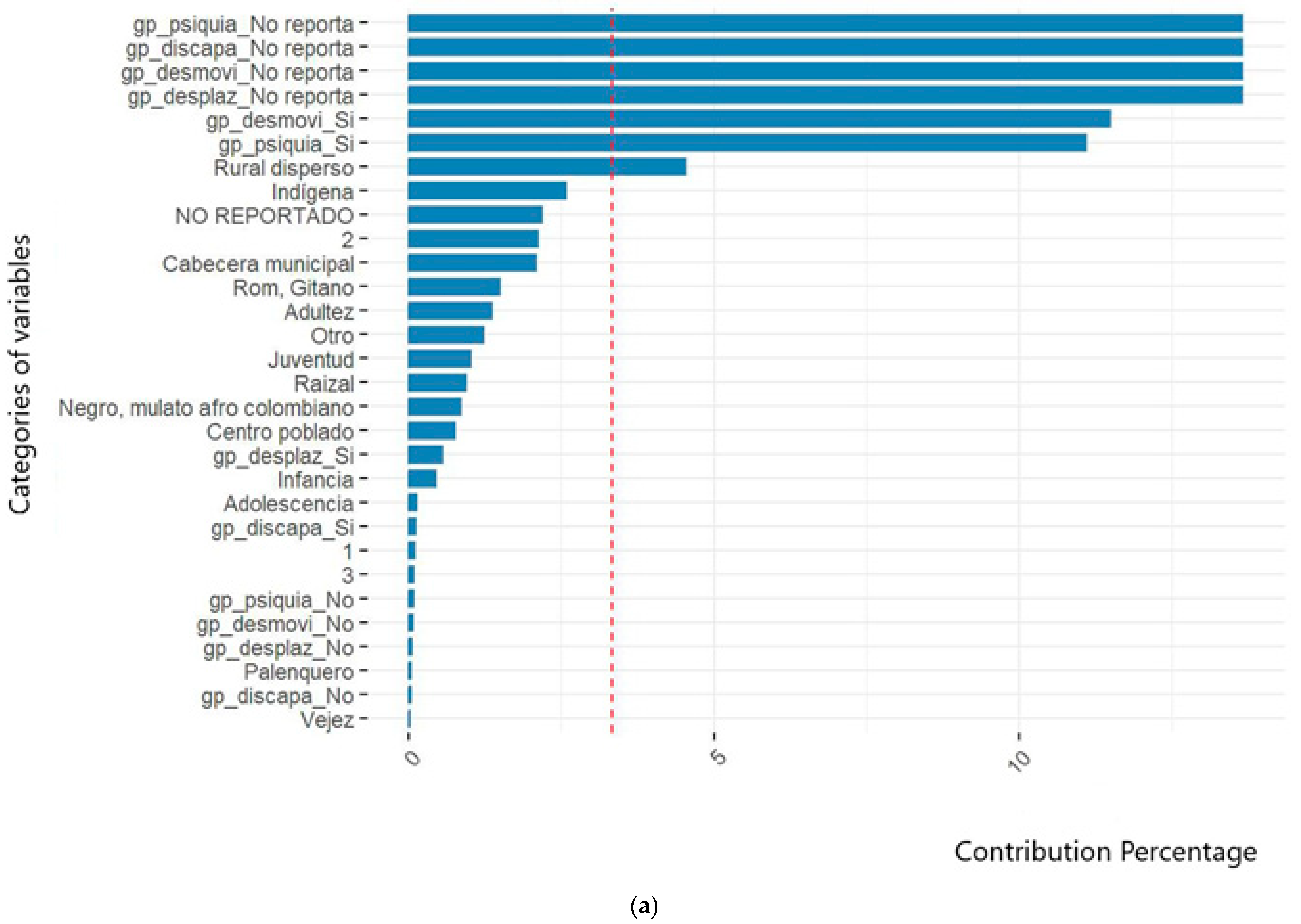


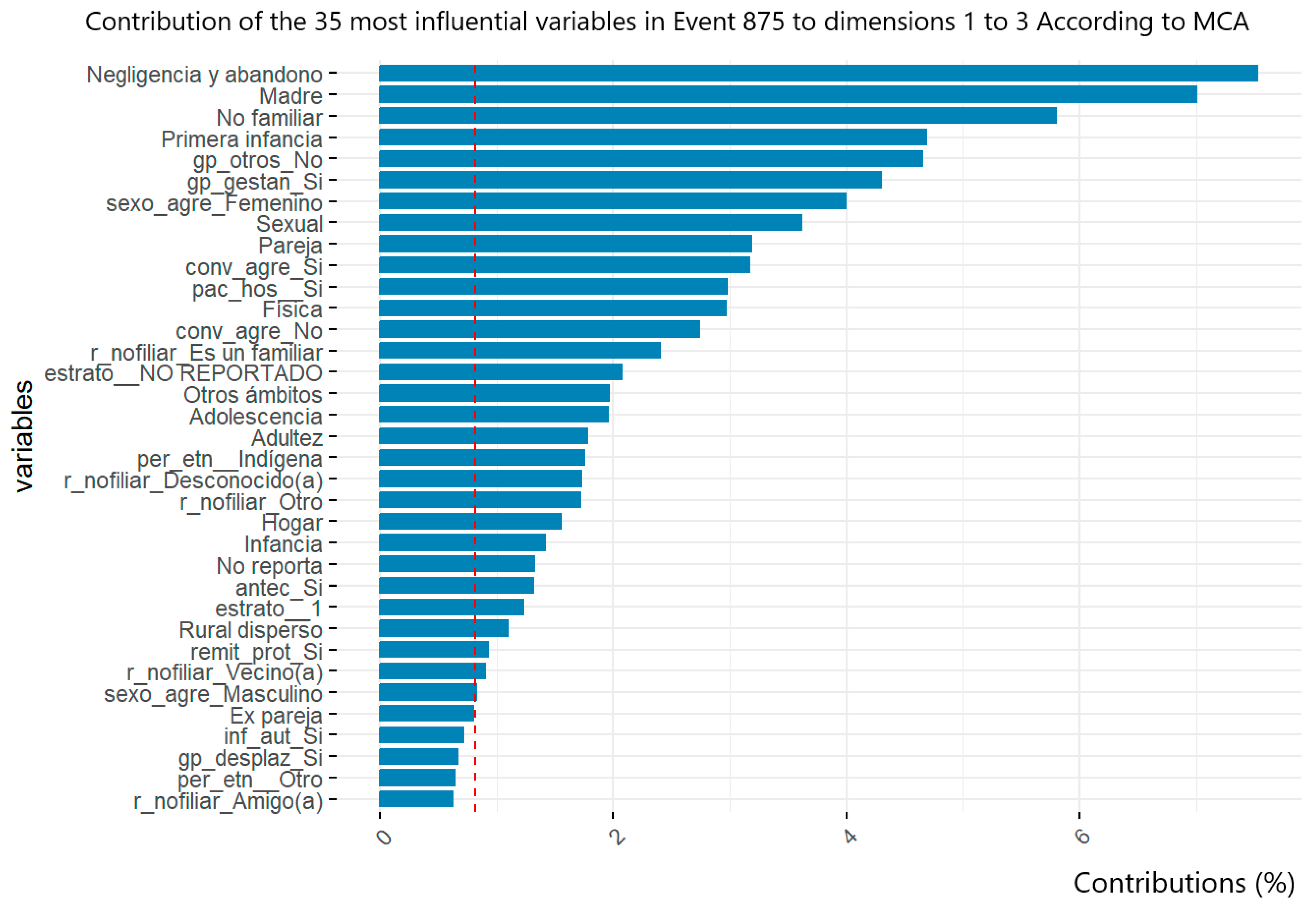
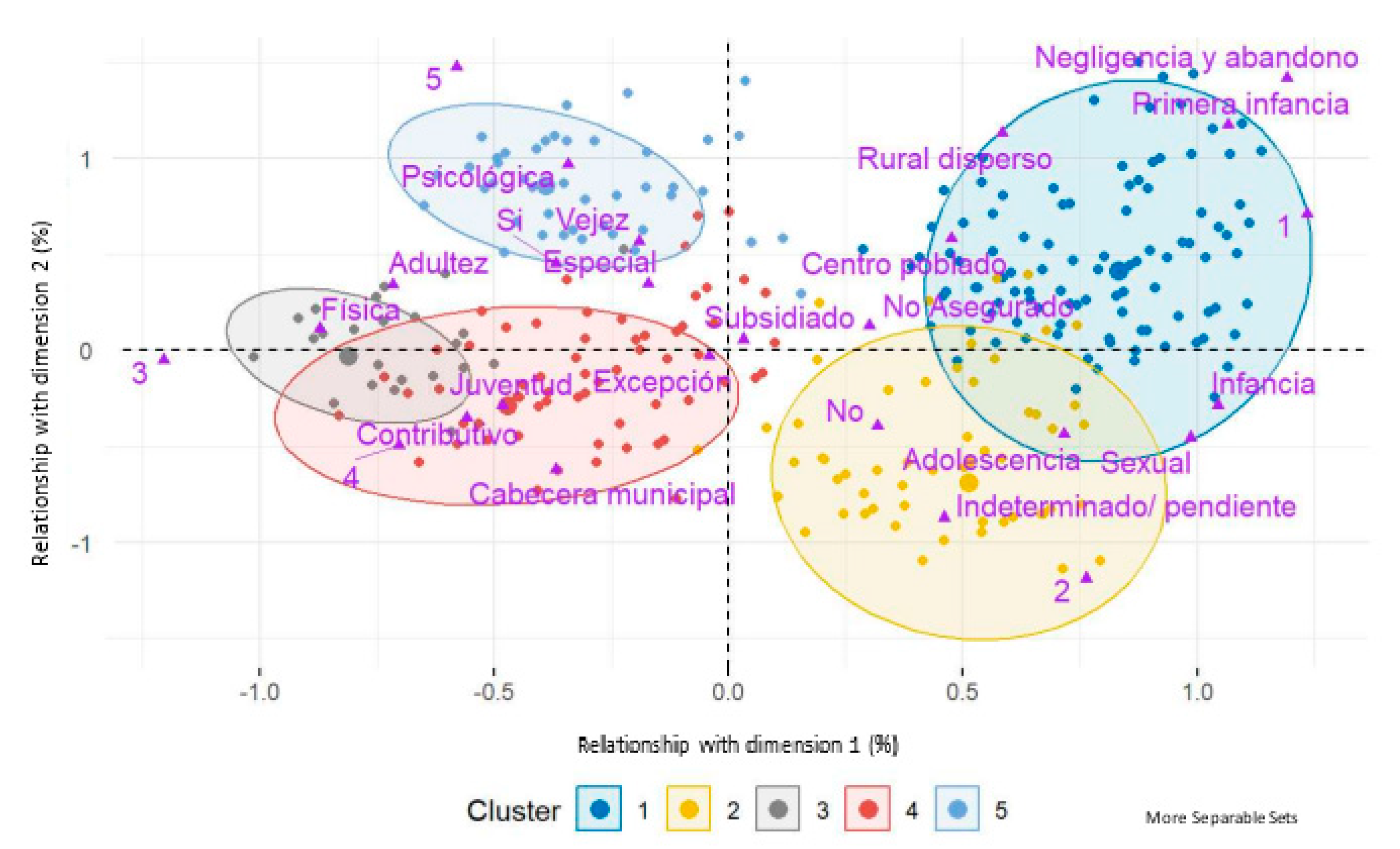

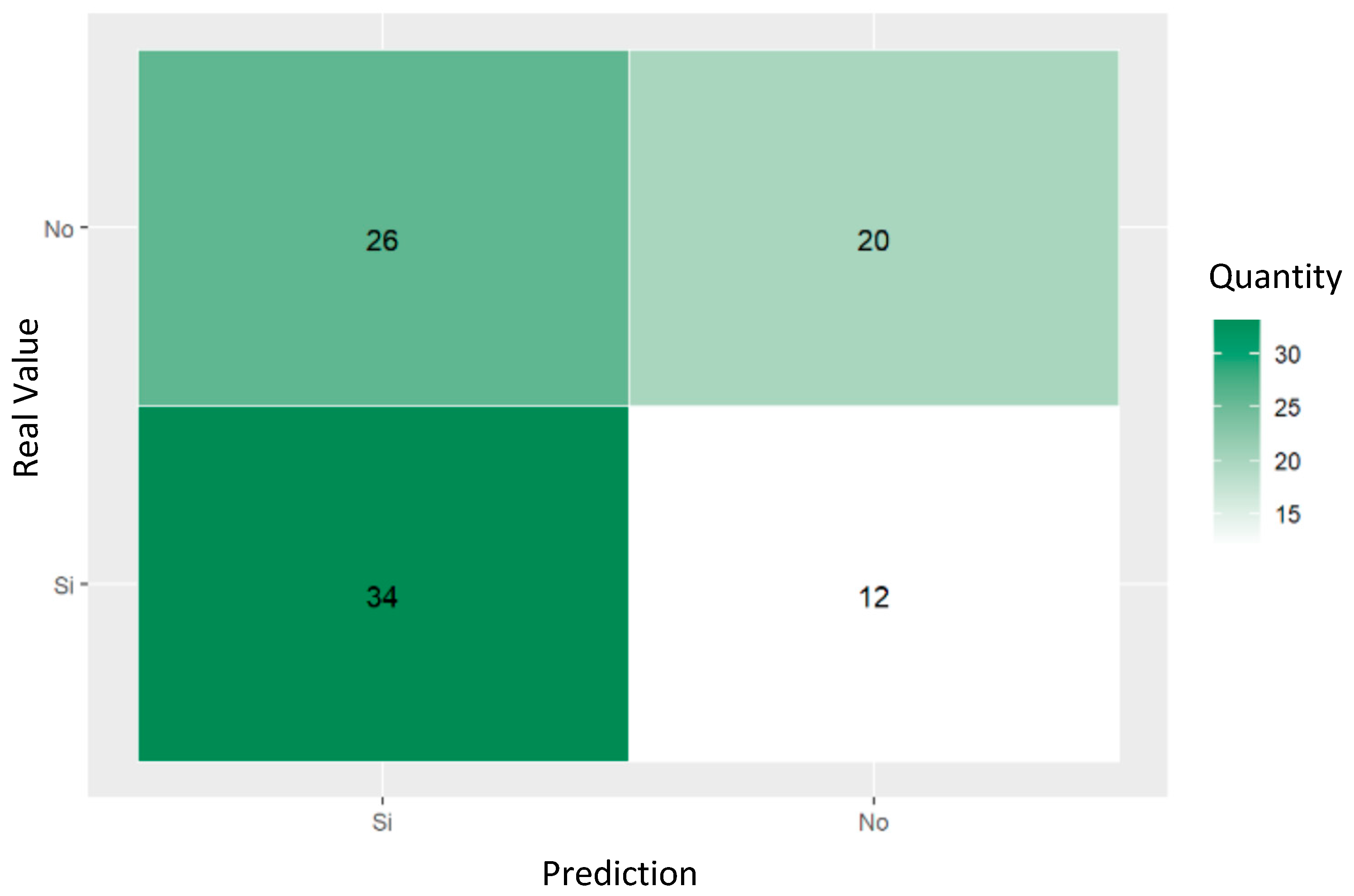

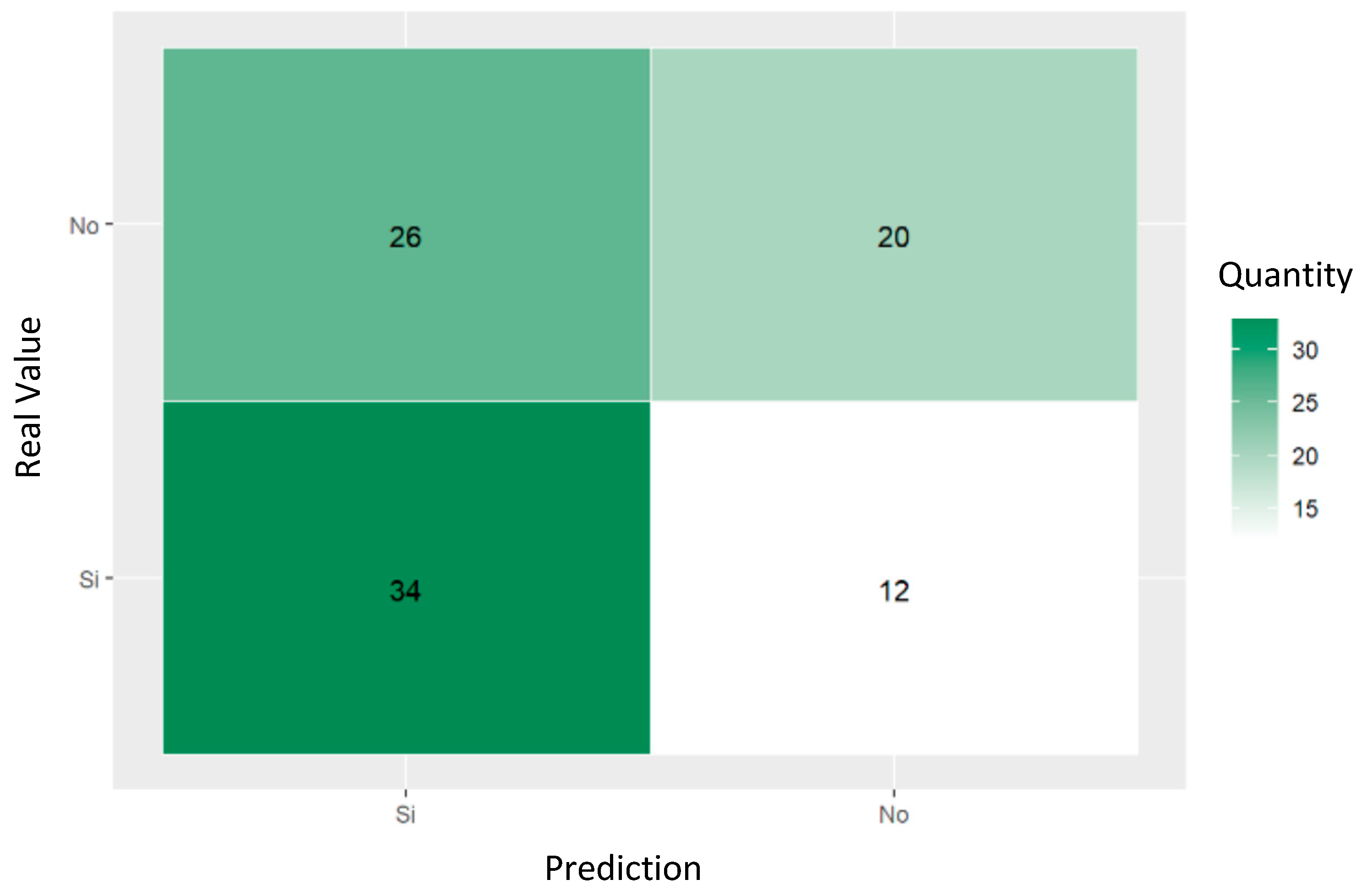
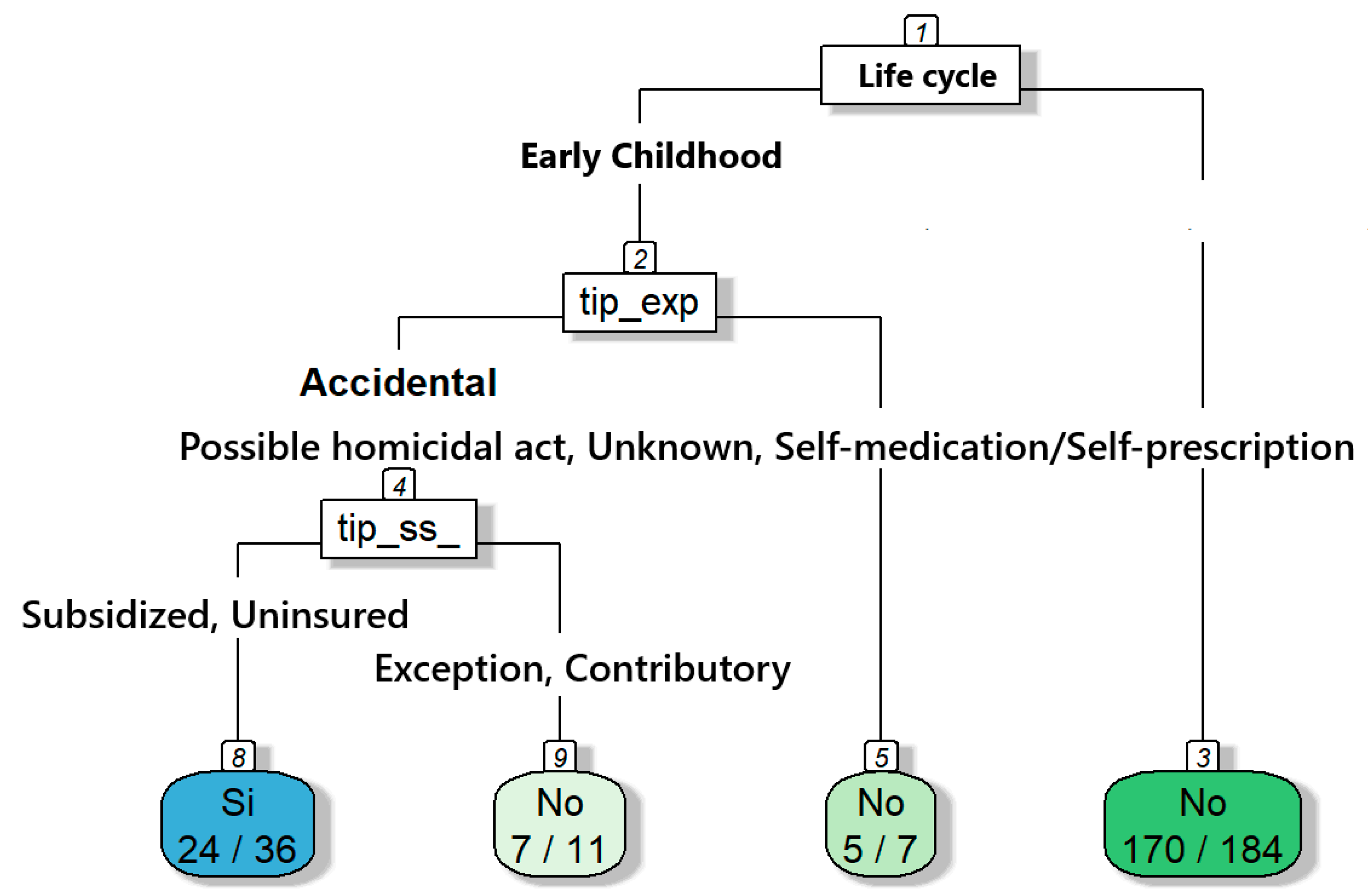


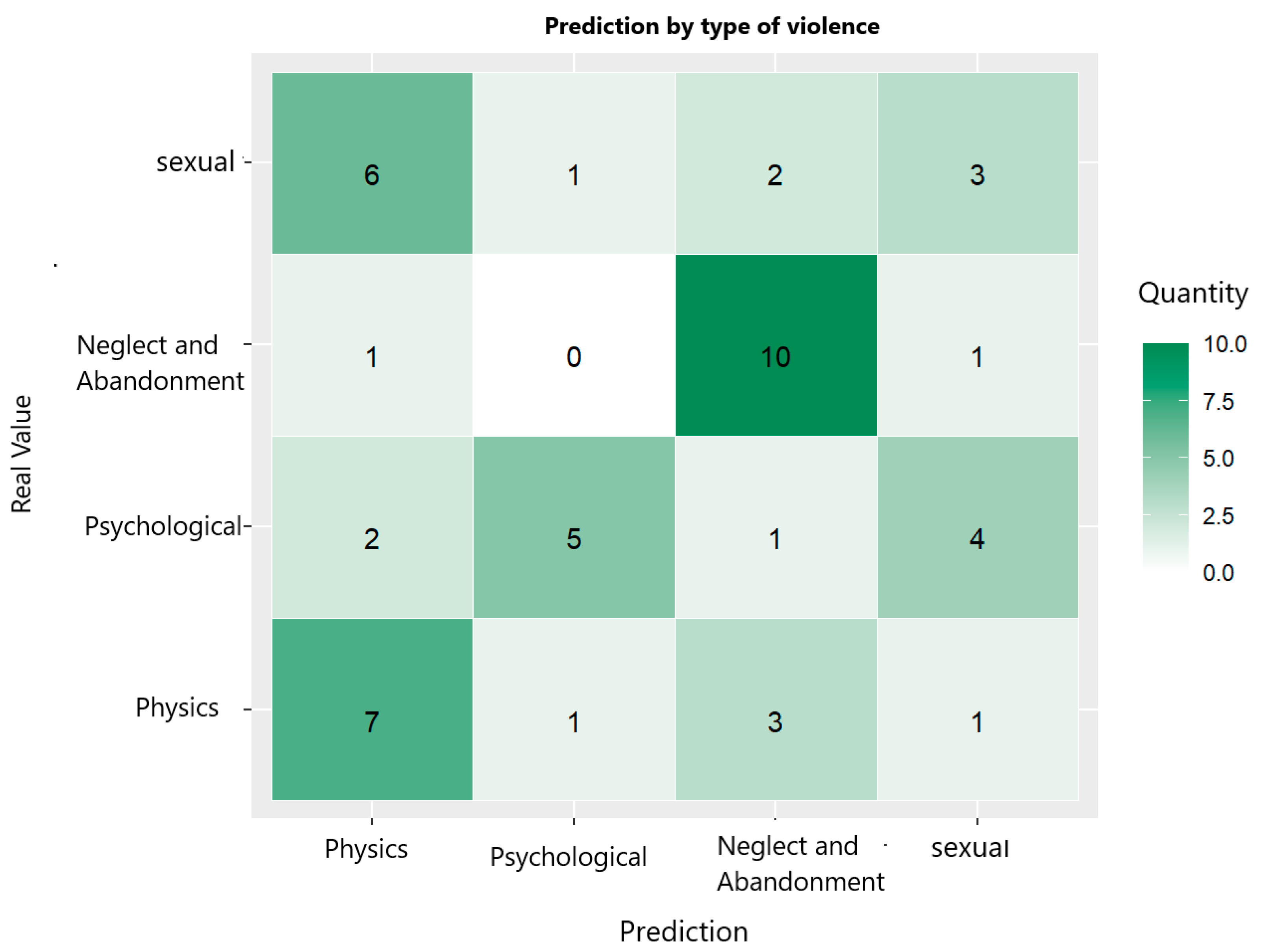
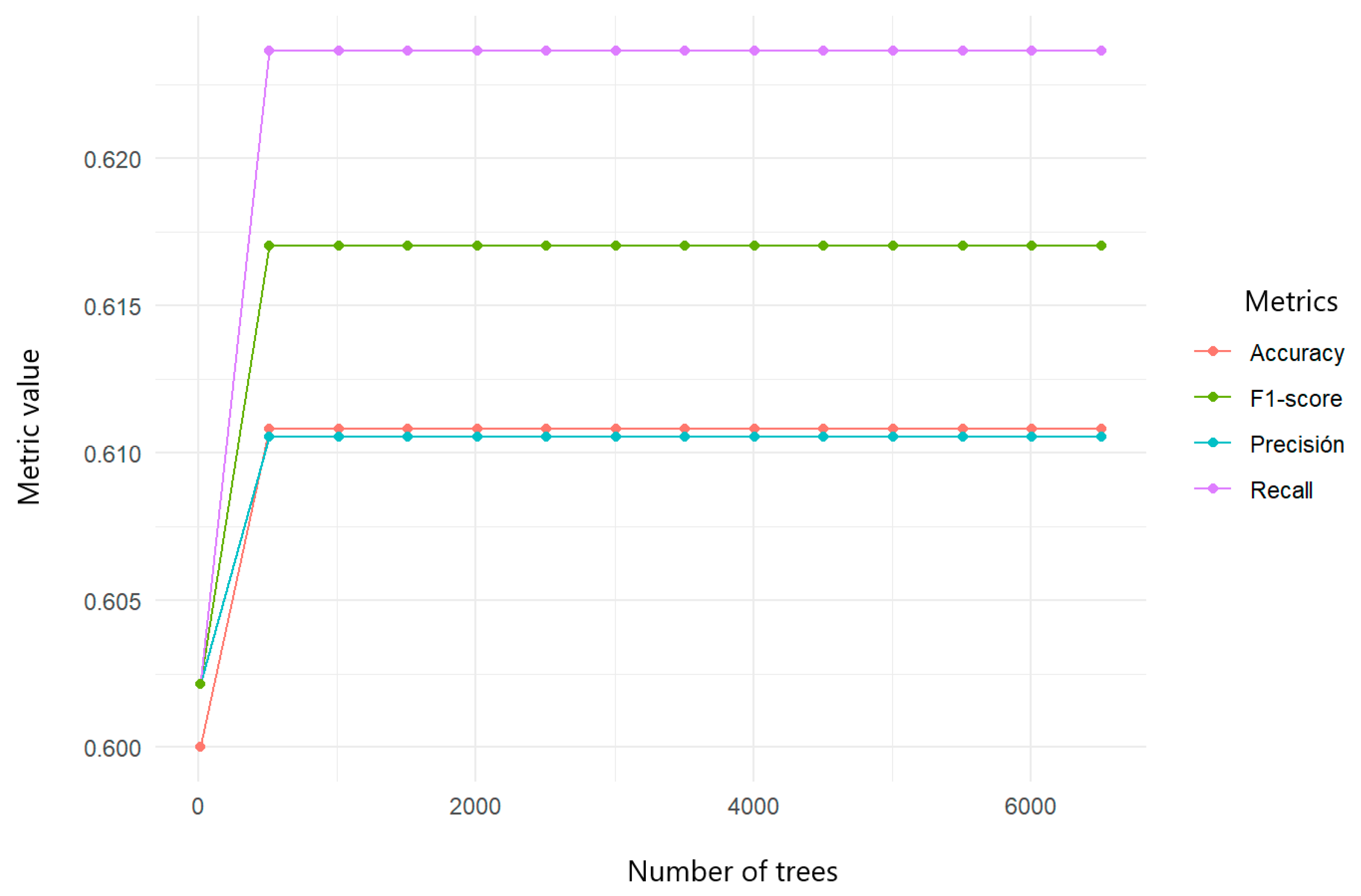


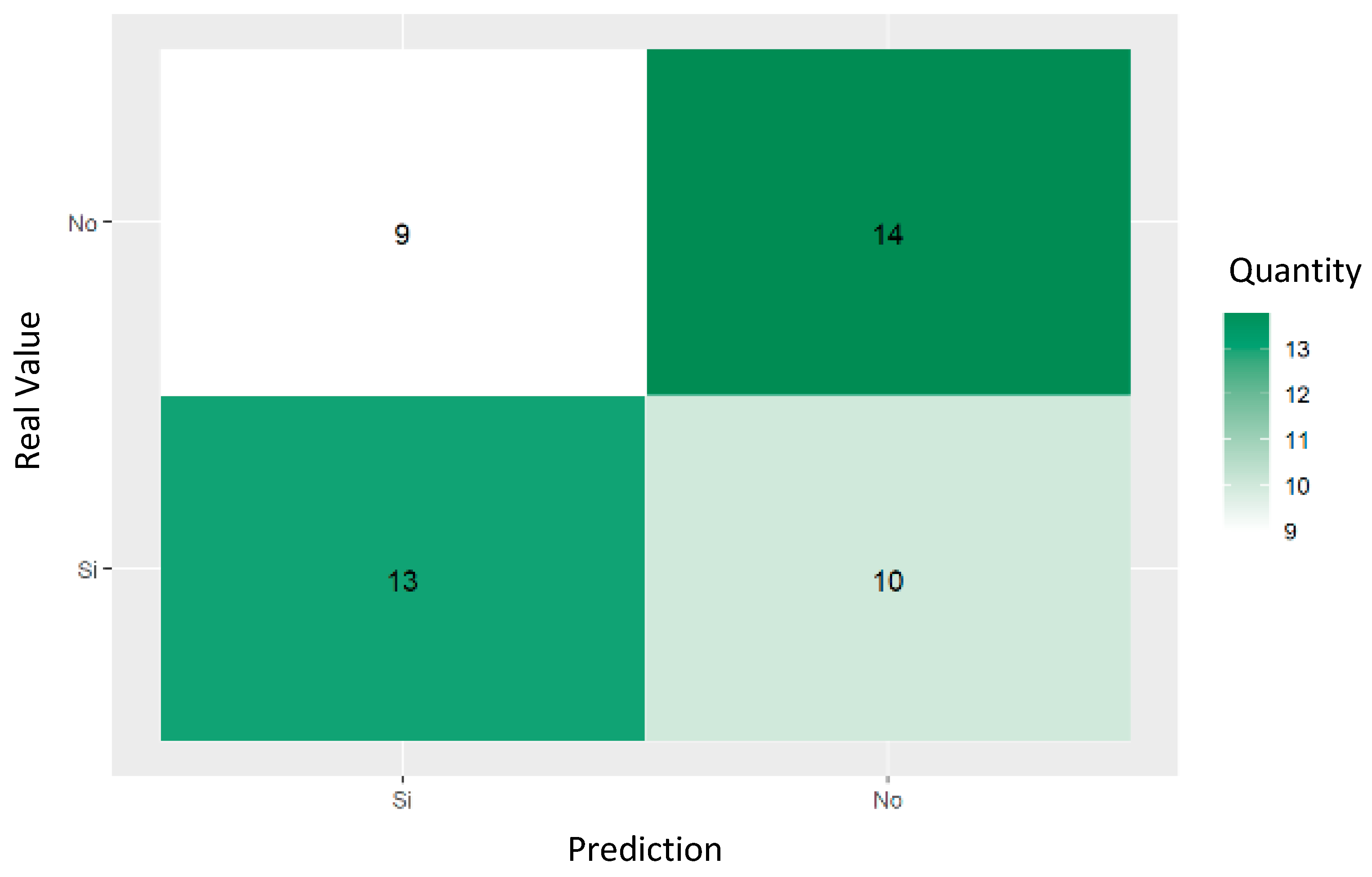





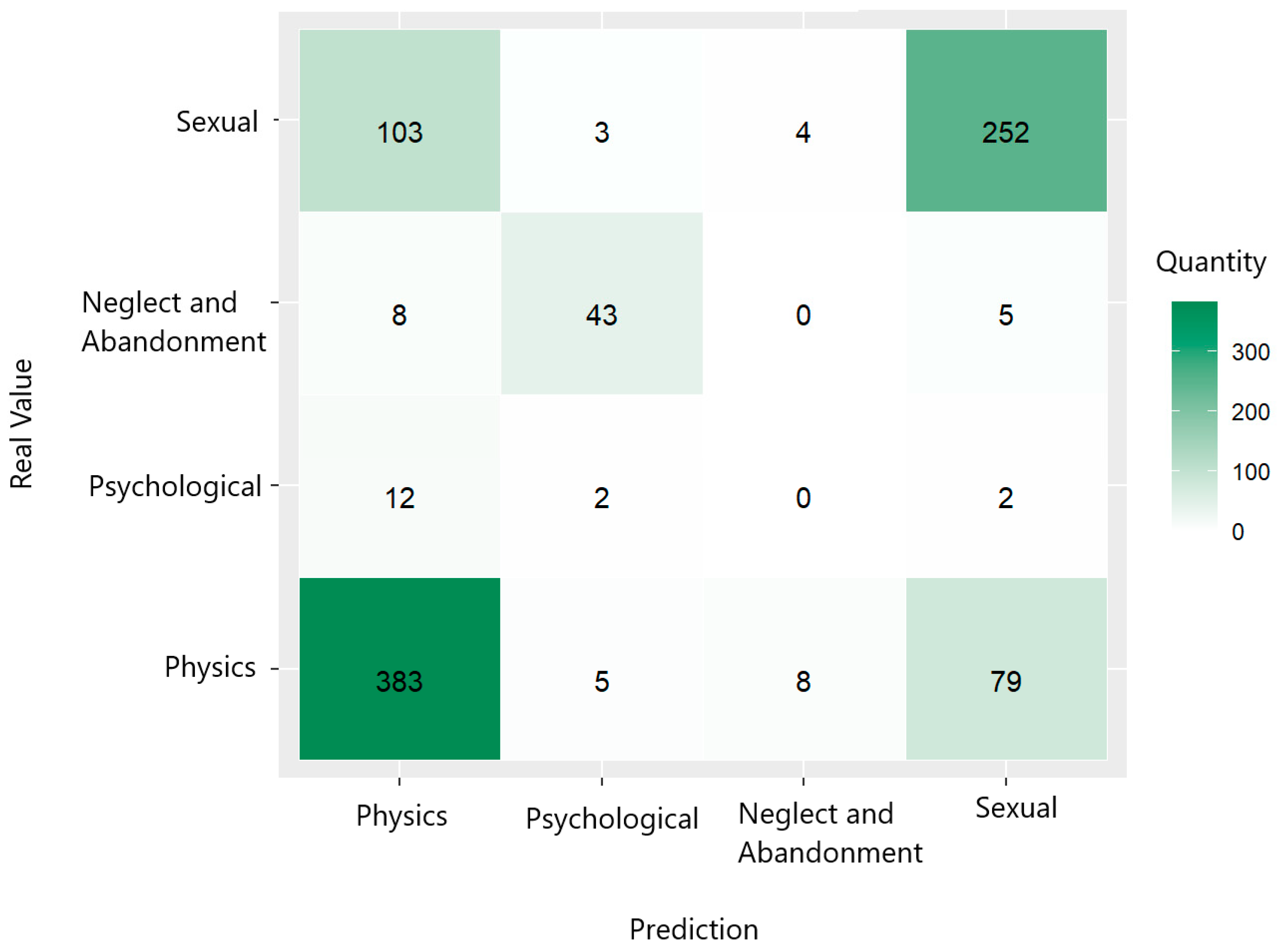




_Bryant.png)



